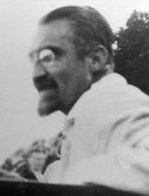

Heinrich Tietze was a student at the Technische Hochschule in Vienna, starting his studies there in 1898. He went to Munich in 1902 to continue his studies. Returning to Vienna, Tietze was awarded his doctorate in 1904. Tietze submitted his habilitation thesis to Vienna in 1908 on a topological topic considering topological invariants. From 1910, he was an
extraordinary professor of mathematics at Brünn, and in 1913 he was promoted to ordinary professor.
His career was interrupted, however, in 1914 by the outbreak of World War I.
Tietze served in the Austrian army for the duration of the war, returning to Brünn when hostilities had ended. In 1919, he accepted the chair of mathematics at the University of Erlangen. After 6years there, Tietze accepted a chair at the
University of Munich. He remained in Munich for the rest of his life, retiring from his chair in 1950 but continuing his mathematical research almost up to the
time of his death.
Tietze contributed to the foundations of general topology, and developed important work on subdivisions of cell complexes. He wrote 6 books and 104 papers over his career. The bulk of this work was carried out after he took up the chair at Munich in 1925.
In 1908, Tietze recognised that from the abelianized fundamental group of a space all the
earlier invariants could be calculated. In a paper, Tietze produced a finite presentation for the fundamental group and invented the now well-known
Tietze transformations to show that fundamental groups are topological invariants.
In the same paper, Tietze gives the first reference to the isomorphism problem for groups.
Tietze did not initiate the study of combinatorial group theory, but he made the first major step forward. Among the topics in topology which Tietze worked on were knot theory, Jordan curves, and continuous mappings of areas. Tietze also wrote on map coloring, and wrote a well
known book Famous Problems of Mathematics. Topics outside topology which Tietze worked on included ruler and compass constructions, continued fractions, partitions, the distribution of prime numbers, and differential geometry.
Tietze received many honors for his contributions. In particular he was elected a member of the Bavarian Academy of Sciences, and served 2 terms as Secretary to the Mathematics and Natural Sciences Division. He was also elected to the Austrian Academy of Sciences in 1959.